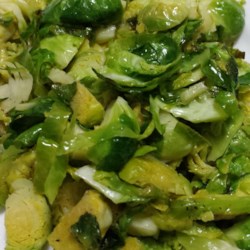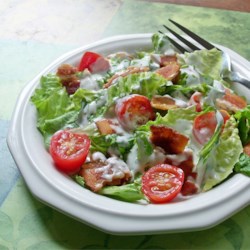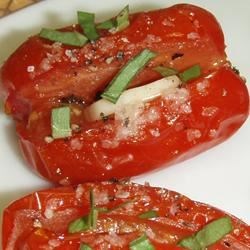Farm Update
 |
| Fred found a bunch of snakes living under the black plastic that covered the rows of sweet potatoes. |
What to Expect in This Week's Share
 |
| Our beautiful and delicious cherry tomatoes will be in the shares again this week! |
- Brussels sprouts or broccoli
- Carrots or cabbage
- Tomatoes or cherry tomatoes
- Kale or cooking greens
- Large leaf salad mix or regular salad mix
- Beans, beets, or bok choy
- Baby fennel, slicing tomatoes, or baby head lettuce
Veggie Spotlight: Brussels Sprouts
Recipes
This is the time of year that we usually associate with
Brussels sprouts, when the sprouts have gotten to the proper size and the cool
mornings of the early fall have given them a pleasant, rich flavor. Though they
are time consuming for us to harvest, it is one of those seasonal crops that we
really look forward to enjoying at home.
The exact history of the Brussels sprout is difficult to
trace, but specific references start appearing in 16th century
writings. The Brussels sprout was bred from cabbage type plants at some point,
and they were first known, not surprisingly, to be found near Brussels,
Belgium. Thomas Jefferson brought some
of the first Brussels sprouts to North America, but they did not become very
prevalent in the American diet until the 1900s.
When commercial scale freezing technology became widely available
Brussels sprout production skyrocketed in the U.S. By the 1960s they were very widely known to most American homes,
and they were infamous (definitely in a bad way) at the table to many young children. This is because of Americans’ tendency to
overcook just about everything during this time period; Brussels sprouts are a
food particularly unforgiving to overcooking as they begin to release a pungent
sulfur taste and smell if they are cooked too long. In the 1990s, the Brussels sprouts got a
rebirth in popularity as big name chefs started expanding the public’s
awareness of methods for their preparation, and many people learned for the first
time that Brussels sprouts are not, in fact, horrible.
Brussels sprout are exceedingly healthful and have a very
high potency against cancer-causing compounds in the body. They are also found
to significantly lower cholesterol and provide high amounts of vitamin K along
with many other nutrients. In fact, their
health benefits often exceed those of other superfoods like kale and broccoli.
 |
| Brussels Sprouts actually grow tightly up the stalk of the plant. |
Our Brussels sprouts on the farm require the longest growing
time of any plant we grow. They are
started as seeds in the greenhouse in mid to late March, then after several
weeks they are planted into raised beds with plastic mulch. They are heavy feeders (which means that they
draw more of the soil’s nutrients than many other plants) so we give them extra
chicken manure pellet fertilizer and plant them in soil that is high in organic
matter. Then they are very easy to take
care of until late summer, usually only requiring a bit of watering until
then. In late summer the aphids start to
come to the Brussels sprouts, which we then spray with a combination of
diatomaceous earth and Pyganic (a product name for a Chrysanthemum extract) to
keep the populations down. However, this
only beats them back but does not completely get rid of them. Around the first week of September we snap
off the top growing point on the plant to encourage the Brussels sprouts to
fill out. This happens as the plant hormones
signal the growing buds that they need to grow out rather than up, since there
is no growing point to continue producing more foliage on the top of the plant.
This season was abnormally cool, so we were able to start harvesting the
sprouts earlier, but in a typical year we start harvest around the 1st
of October. Usually it takes until October
for the Brussels sprouts to lose their bitterness that is caused by hot
weather. Then we strip the developed
Brussels sprouts off the stalk and trim the aphid damaged outside leaves,
leaving you with Brussels sprouts that are ready to cook. We typically stop harvesting them in early to
mid-December.
| There are many really simple and delicious ways to prepare Brussels sprouts! These are one vegetable that don't require any complicated recipes to be wonderful. |
At home our default way to cook them is with bacon or ham
fat, though we also like frying them in butter and garlic. The key to bringing out their great flavor is
to cook them until thoroughly cooked but not mushy. Other methods of preparing them are to use
them raw in a salad where they are more finely chopped and paired with a heavy
dressing and/or other strongly flavored ingredients like raw fennel. There are also the French cream sauce/Brussels
sprouts combinations popularized by Julia Child, and their use in some Asian
stir fry type dishes that are also common.
As much as I avoided Brussels sprouts of all types as a
child, I am completely thrilled that they are back again for another fall, and
I hope you enjoy them as much as we do!
Check out this extremely simple but delicious way to cook Brussels sprouts. These Truly Delicious Brussels Sprouts are pretty similar to how we often prepare them at home.
This recipe for Pan Roasted Brussels Sprouts with Bacon is another common way we prepare them at home, especially as a side dish with breakfast. Give it a try if you're looking to awesome up your morning a little!
















